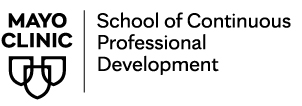Mayo Clinic Proceedings - Epidemiology, Diagnosis, and Treatment of Neck Pain
One of the premier peer-reviewed clinical journals in general and internal medicine, Mayo Clinic Proceedings is among the most widely read and highly cited scientific publications for physicians, with a circulation of approximately 125,000. Mayo Clinic Proceedings is published by Elsevier and sponsored by Mayo Clinic and the Mayo Foundation for Medical Education and Research. The mission of Mayo Clinic Proceedings is to promote the best interest of patients by advancing the knowledge and professionalism of the physician community. Since 2009 the Journal has offered CME credit for specific articles from both the Mayo Clinic for Concise Review for Clinicians and specially commissioned Symposia articles (comprehensive coverage on one topic).
Participation in this activity consists of reviewing articles and responding to a short online test. It is estimated that this activity will take approximately one hour per article. There is no charge for participating in this Journal CME activity.
NOTE: You must select AMA PRA Category 1 CreditTM in your profile's credit eligiblility field in order for the sytem to recognize that you want CME credit. The system will only issue credit for the credit types that match your profile.
To receive CME credit, please do the following:
- Click Take Course
- Complete quiz and evaluation (There is a required 80% pass rate in order to earn credit, with 1 retake allowed.)
- Print your Record of Attendance
Questions? cme@mayo.edu
ACCREDITATION:
Mayo Clinic College of Medicine is accredited by the Accreditation Council for Continuing Medical Education to provide continuing medical education for physicians.
Mayo Clinic College of Medicine designates this Journal-based CME activity for a maximum of 1.0 AMA PRA Category 1 Credit™. Physicians should claim only the credit commensurate with the extent of their participation in the activity.
DISCLOSURE SUMMARY:
Planning Committee:
William Lanier, M.D., Thomas Beckman, M.D., Christopher M. Wittich, M.D., Terry Jopke, Nicki Smith
Author:
Steven P. Cohen, M.D.
Professor, Departments of Anesthesiology & Critical Care Medicine, and Physical Medicine and Rehabilitation, Johns Hopkins School of Medicine, Baltimore, MD; and Professor, Depts. of Anesthesiology & Physical Medicine & Rehabilitation, Uniformed Services University of the Health Sciences, Bethesda, MD
DISCLOSURES: Dr. Cohen serves as a consultant for Regenesis and Semnur, and is on the Advisory Board of Kimberly Clark. None of the planning committee members listed above have any relationships to disclose.
Funding Sources: Funded in part by a Congressional Grant from the Center for Rehabilitation Sciences Research, Bethesda, MD. The role of the funding source was only provisions to pay research personnel.
The opinions or assertions contained herein are the private views of the authors and are not to be construed as official or as reflecting the views of the Dept. of the Army or the Dept. of Defense.
References to off-label and/or investigational usage(s) of pharmaceuticals or instruments: None
Target Audience
The target audience for Mayo Clinic Proceedings is primarily internal medicine physicians and other clinicians who wish to advance their current knowledge of clinical medicine and who wish to stay abreast of advances in medical research.
Learning Objectives
On completion of this article, you should be able to (1) distinguish between the different types (eg, neuropathic or nociceptive) of neck pain, (2) identify “red flags” that may warrant advanced work-up, (3) be familiar with the risk factors for developing neck pain and its natural course, (4) know when and in whom advanced diagnostic testing may be helpful, and (5) identify which patients to refer for specialty care (eg, injections or surgery).
Available Credit
- 1.00 AMA PRA Category 1 Credit™

 Facebook
Facebook X
X LinkedIn
LinkedIn Forward
Forward